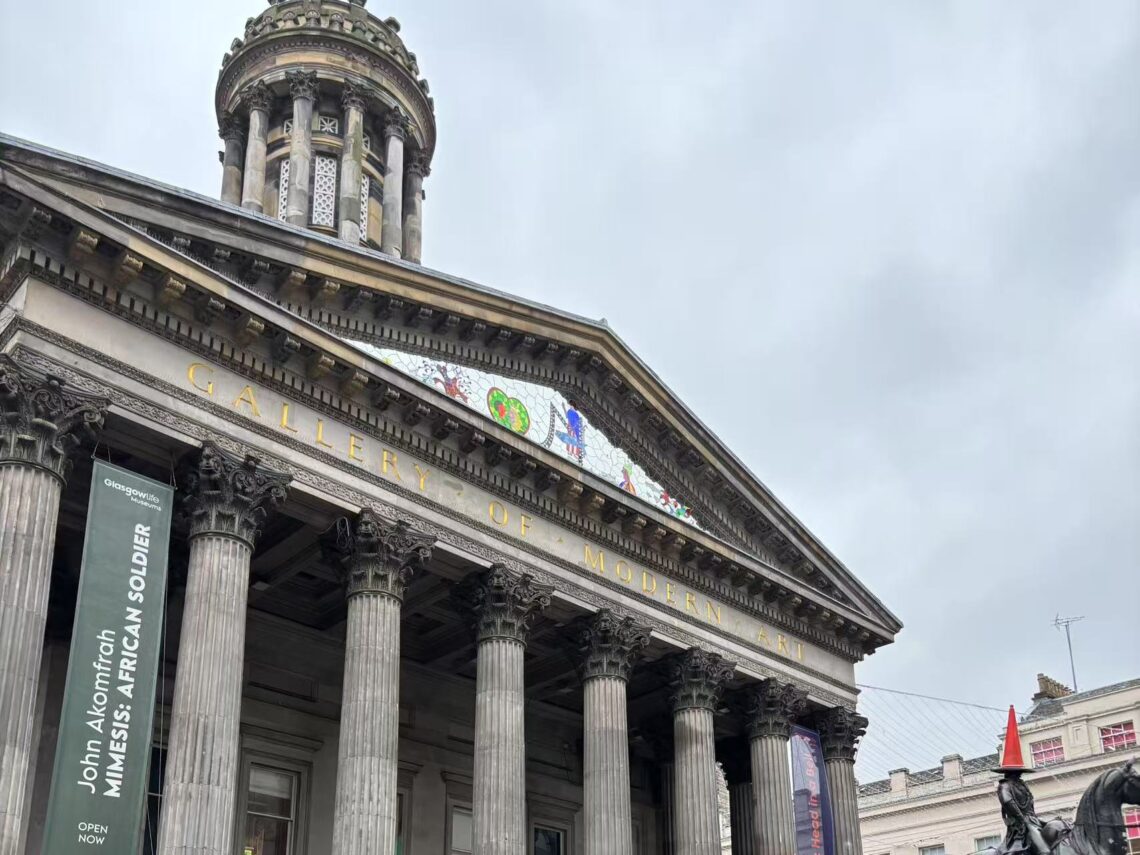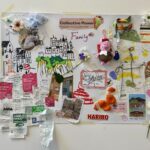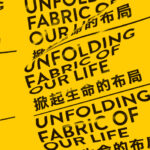This week, we went to Glasgow for a field study.
Firstly, we visited “Derek Jarman’s Modern Nature——Digging in Another Time”, where we explored the records in Jarman’s 1989 diary regarding the performances at the Third Eye Center, the Prospect Cottage garden, and the film preparations. Through this, we presented his poetic response to nature, gay activism, and the AIDS crisis in his creative works. The exhibition not only showcased Jarman’s paintings, collages, and videos, but also invited six contemporary artists, such as Andrew Black and Luke Fowler, to have a dialogue from a new perspective. This highlighted the dialectical relationship between art and politics and personal experiences.
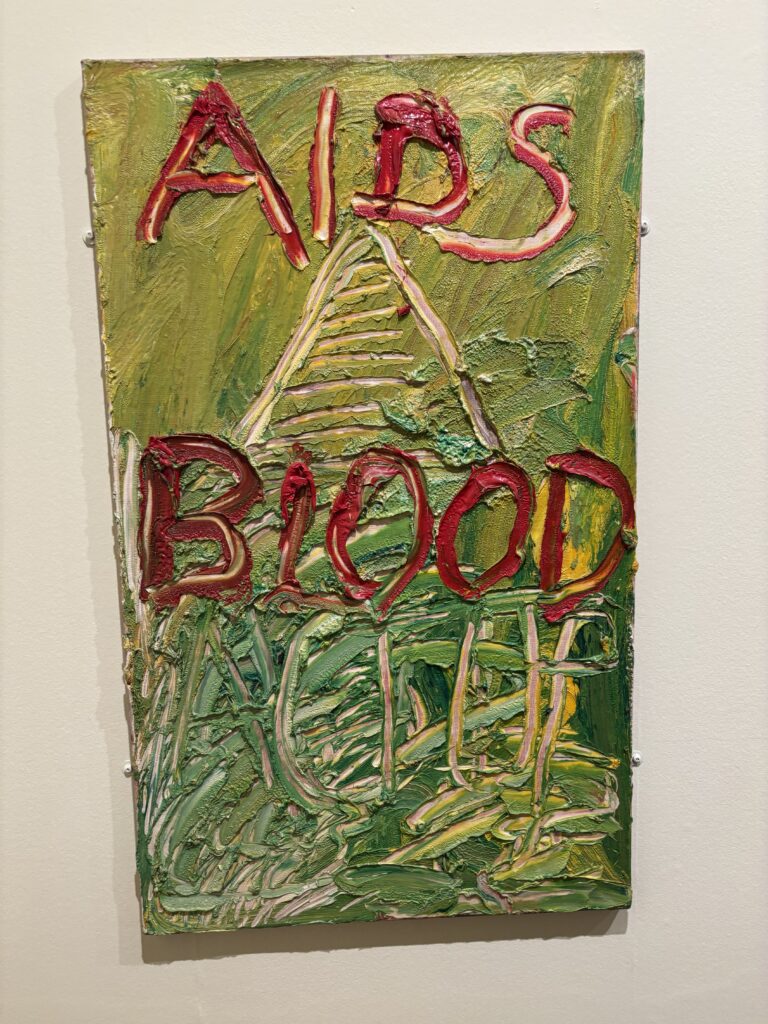
What was learned: Jarman’s “Modern Nature” exhibition demonstrated how to integrate the artist’s personal history, political stance, and creative process into the exhibition narrative. The exhibition achieved a cross-temporal narrative of dialogue between historical archives and contemporary art. This inspired curators to utilize archival materials and first-hand records when curating to construct exhibitions with greater emotional resonance and historical depth.
Then we visited the Hunter Museum. The exhibition halls of the Hunter Museum were clearly divided, with each hall showcasing collections from different fields. For example, the natural history hall featured animal specimens and mineral fossils; the art hall displayed European paintings and sculptures.
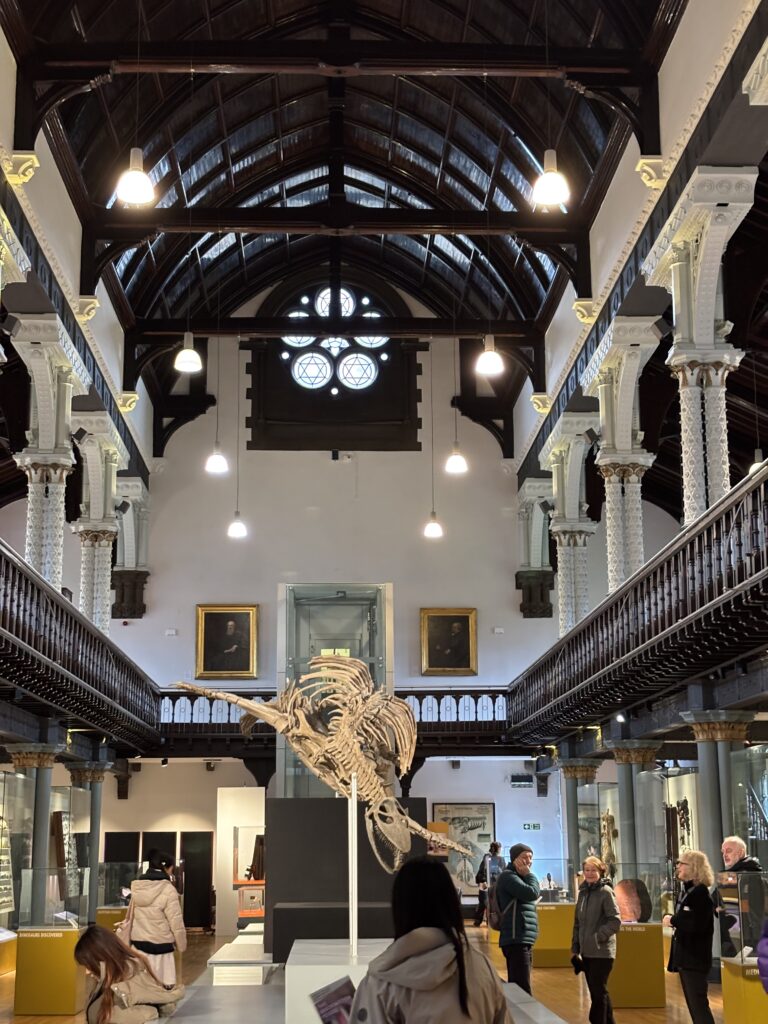
The third exhibition broke the norm: the paintings were hung on the walls without labels, as if returning to the viewing method of purely relying on visual intuition in the early 20th century. The images, colors, arrangement, and contrast jointly constructed a silent narrative space, allowing each viewer to experience the charm of artistic multiplicity and the fluidity of historical narration in an unrestricted interpretation.
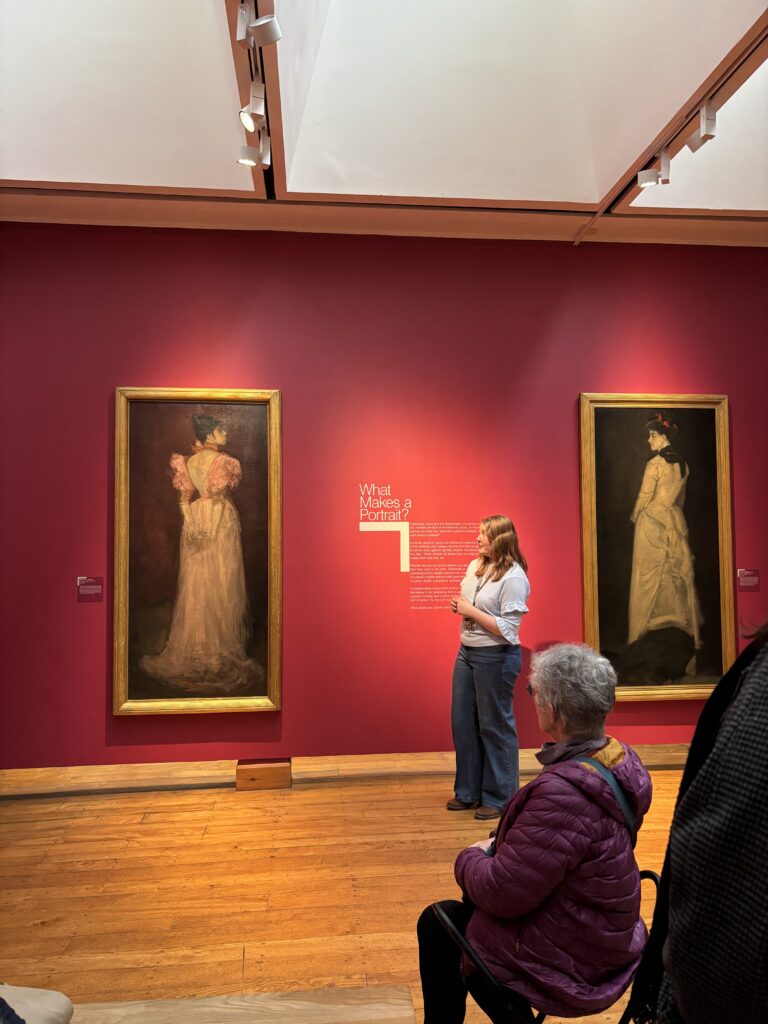
What was learned: Encouraging viewers to construct their own interpretations without textual guidance through intuitive visual experiences. This approach encourages viewers to participate and interpret diversely, breaking the limitations of traditional explanations on the meaning of the works, and helps stimulate more open discussions and interactions.
In the afternoon, we arrived at tramway and visited Maud Sulter’s “You Are My Kindred Spirit”. This exhibition focused on female identity and the historical narrative of black women. The exhibition constructed a private and political dialogue through a combination of images and text, both reenacting Sulter’s criticism of the marginalized status of black women in art history and echoing her consistent belief in voicing women’s voices through poetry and strength.
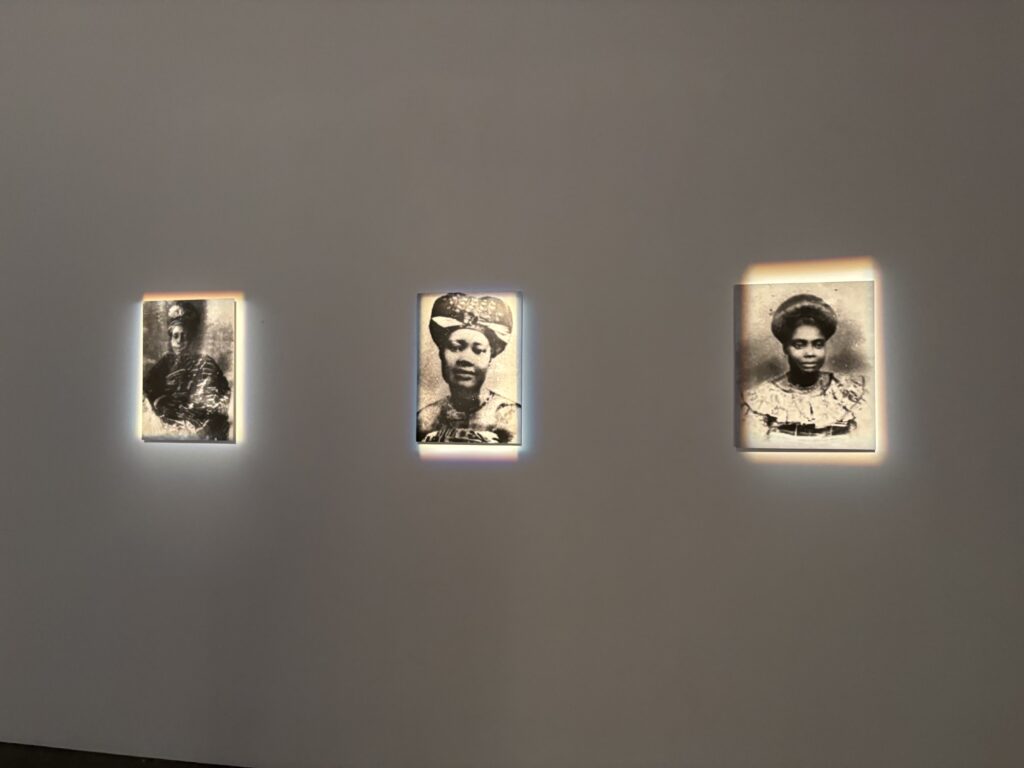
What was learned: This exhibition reflects that curating is not only about displaying works, but also about constructing a dialogue. Curators can draw on this approach to explore issues such as identity, gender, and cultural memory, strengthening the exhibition’s social and political discourse.
Finally, we arrived at the Glasgow Modern Art Gallery. As a display venue, it itself is a living art installation. The space design and exhibition content complement each other, from lighting, wall colors to the display method of the works, all telling the multiple relationships between time and memory, tradition and modernity.
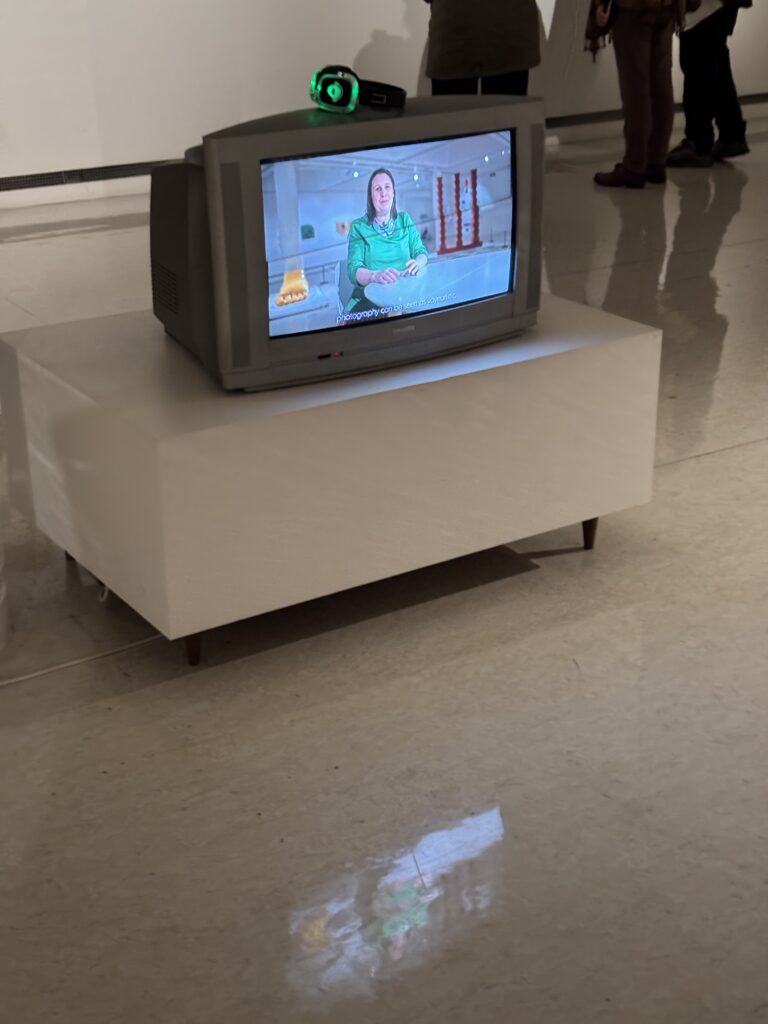
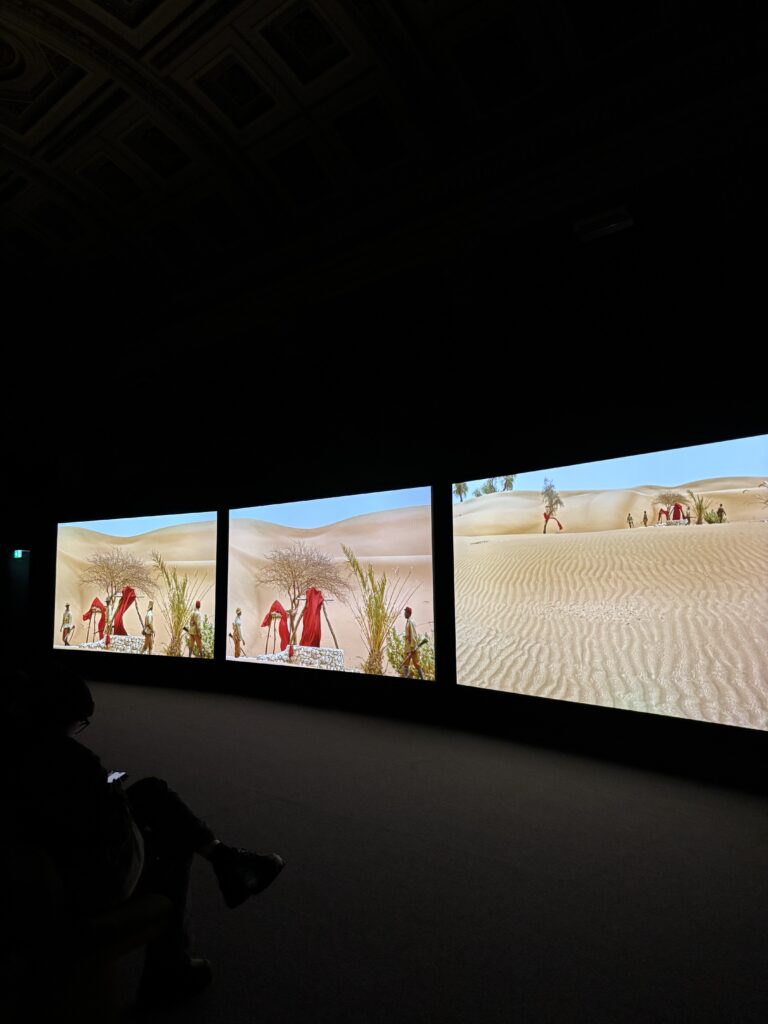
References
Gla.ac.uk. (2024). University of Glasgow – University events – Event listings – Digging in Another Time: Derek Jarman’s Modern Nature. [online] Available at: https://www.gla.ac.uk/events/listings/index.html/event/13578.
Thedrouth.org. (2024). MAUD SULTER’S ‘You are my Kindred Spirit’ by Federica Giardino – The Drouth. [online] Available at: https://www.thedrouth.org/maud-sulters-you-are-my-kindred-spirit-by-federica-giardino/.
